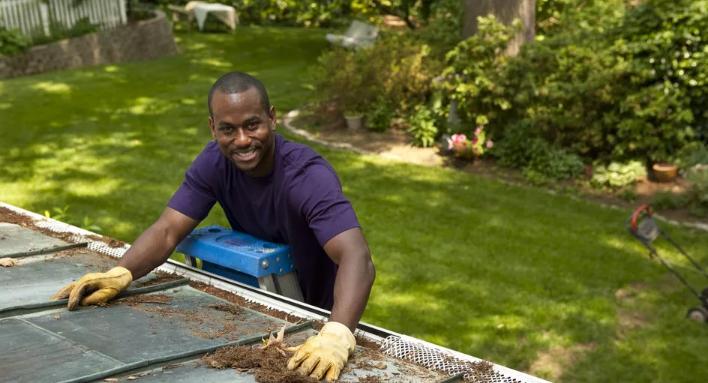For many owners, home maintenance happens only when something goes awry. Overflowing gutters, a balky furnace, or a chimney that refuses to draw provoke an expensive emergency call to service technicians. Worse, your family’s safety could be in jeopardy when key areas of your home are neglected for too long. To limit or even eliminate service delays, preserve your home’s value, and keep everyone comfortable, follow this home maintenance checklist on a regular basis.
- Winter-With cold temperatures and harsh elements pressing in, the focus of winter home maintenance is damage control. Because of inclement weather, you may not have the leisure to do extensive exterior repairs.
- From a safely secured ladder, check gutters and the lower roof for ice dams and eliminate as necessary.
- Check that the covers are still on the outside hose bibs (faucets) and that they have not iced up.
- Use this indoor-friendly season as your opportunity to clean the basement, garage, and other interior spaces that get neglected during warm, sunny months.
- Keep an eye on your electrical service drop and the line that leads from your home to the power pole (only if you have above-ground electric service). If large branches have fallen on or are hanging on the line, call the electric company for removal.
- Make sure that the ground next to the house is graded away from the house to prevent interior flooding.
- Spring-Spring home maintenance is chiefly about cleaning up after the mess and damage inflicted by winter.
- Clean the gutters and, using a water hose, make sure that they drain.
- Check the exterior siding for damage and repair as needed.
- When the roof is dry and safe to walk on, check shingles, flashing, and vents for damage.
- Clean and replace window screens.
- Trim back trees that may deposit branches on your home. For branches near power lines, call your electric company for pruning.
- In late spring, install window unit air conditioners.
- Reverse ceiling fans so that the vanes rotate in a counter-clockwise direction. This will move air downward, cooling the room.
- Summer-With higher temperatures and low precipitation, summer affords comfortable working conditions to make intensive repairs that were not possible in prior seasons.
- Make repairs to the home’s siding and paint the exterior as needed.
- Clean and repair your outside deck.
- Wash and apply a sealant to wood fences.
- Flush out your water heater to empty it of sediment.
- Clean debris from window wells.
- Fall -Home maintenance during the fall season is focused on preparing the house for winter.
- Test the sump pump by pouring water down the sump pit until the pump turns on.
- Remove and store the window screens.
- If your home has storm windows, install them.
- Remove window unit air conditioners. If you have central air conditioning, winterize it.
- Call in a furnace service and have them perform annual maintenance.
- Call in a chimney cleaning service or clean the chimney by yourself.
- Winterize exterior hose bibs (faucets) by protecting them with foam covers.
- Remove leaves and debris from garden ponds and water features.
- Reverse ceiling fans so that the vanes rotate in a clockwise direction. This will help distribute the warm air that collects near the ceiling.
- Perform regular quarterly maintenance.
- Regular Quarterly Maintenance-Every three months, perform these critical maintenance tasks:
- Press your smoke detector and carbon monoxide detector buttons to make sure that they are still working. Replace batteries as needed.
- Check the gauges on your fire extinguishers to ensure that they are still correctly pressurized.
- Check your water heater’s temperature and pressure (T&P) valve to make sure that it will expel water. Place a bucket below the relief tube to avoid flooding.
- Make sure that your garage door’s safety reverse function is working and that the electric eyes are correctly positioned.
- For low-use areas such as guest or basement bathrooms, flush the toilet, clean sediment rings from the bowl, and turn on both sink taps.
- Check your water softener to make sure that it is topped off with enough salt.
- Remove showerheads and sink aerators and soak in vinegar to clean out collected sediment.
- Make sure that the dryer vent is properly venting to the outside.
- Test all of the GFCI outlets to make sure that they are working properly.
Source: The Spruce
Collected and published by Arms &McGregor International Realty® editorial team. Get in touch with us at [email protected]

